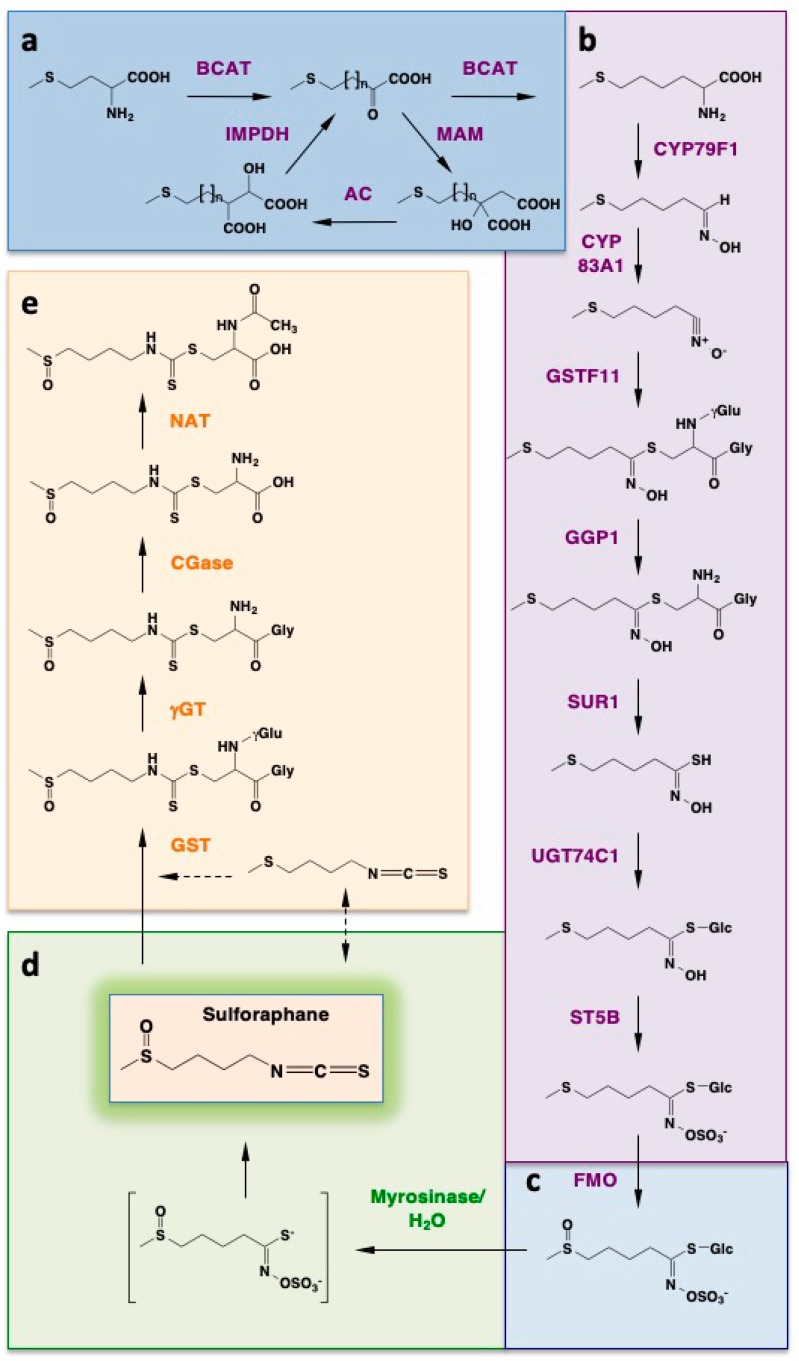Scheme 1.
Biosynthesis of glucoraphanin, its hydrolysis to form the isothiocyanate sulforaphane, and metabolism of sulforaphane. The highly reactive isothiocyanate sulforaphane is produced in plants as an inert precursor, the glucosinolate glucoraphanin. Its biosynthetic pathway originates from the amino acid methionine and proceeds in three stages: (i) methionine side chain elongation by two methylene groups (a); (ii) formation of the core glucosinolate structure (b); (iii) secondary modification of the glucosinolate side chain (c); Upon disruption of the plant tissue integrity, glucoraphanin comes into contact with myrosinase, which catalyzes the hydrolysis of glucoraphanin to give sulforaphane (d); In mammalian cells, sulforaphane is metabolized through the mercapturic acid pathway, and can also undergo an interconversion to erucin (e).

